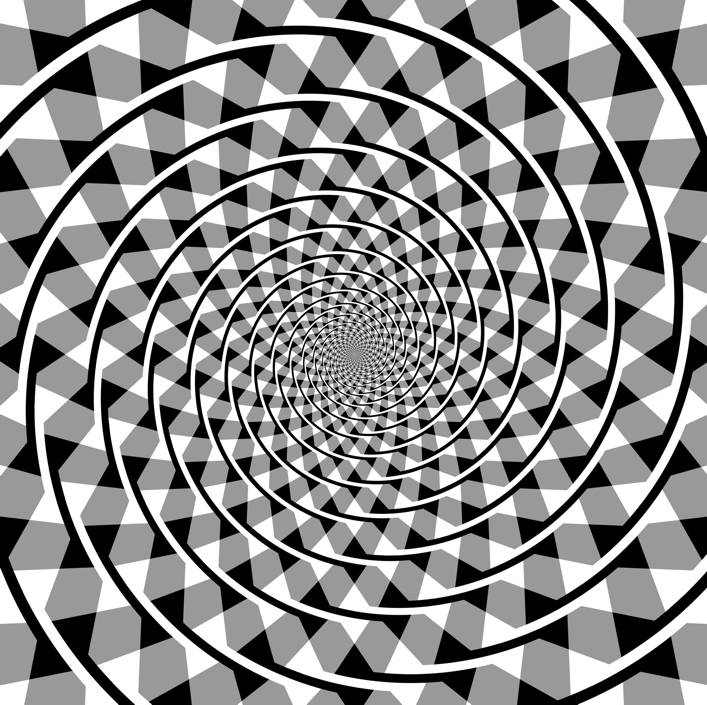On page 44, the section “Perceptual Illusions: malfunctional clues to the system” gives a basic explanation as to why our eyes react to illusions. Basically, our brain has different areas that focus on what things are and where things are. The “where” part of the brain deals with motion, depth, space and figure/ground perception. The “what” part of the brain is actually color-blind and becomes sensitive to contrasting shades.

In the above example, if you focus on the black dot, because our brain is sensitive to shades, the gray around it seems to disappear.

In the Hermann Grid Illusion, our eyes catch the contrasting colors and lines which give off an illusion of a grid.
In contrast, the Lingelbach scintillative grid illusion makes the white dots stand out against the black background. Hence, the gray lines seem to be disappearing, almost like the way the gray shade disappeared in the first image.


In the above two images, our eyes react to the shades as well as the shapes. In the first link, our eyes become extremely sensitive to the use of different shades. In the second link, our eyes see the circles as spirals due to the shades “behind” it. Both create an image of two different surfaces.

In the final image, the Bristol Cafe Wall illusion, the lines appear to be warped, or broken. This is caused by center-surround cells which basically detect curves and angles. Hence, the contrast in color and the lines make the illusions.


Please imbed the links into your text.